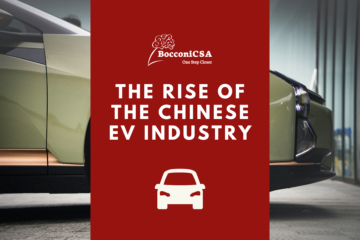Author: Riccardo Cantadori
Regardless of many current challenges, rational optimism and strong deal activity exist throughout the APAC economy.
In particular, China’s merger and acquisition activity saw a strong recovery from the second half of 2020, surging to its highest activity levels since early 2018. By the end of the first half of 2021, registered transactions were 6,177, and an impressive 45 of those deals were worth over $1 billion.
What factors made this possible?
PwC’s Chief Affairs Officer for Asia Pacific, David Brown, while interviewed by the British Newspaper, cited a “perfect storm of factors”.
In addition to the situation of global instability, enhanced by the pandemic, the main driver for M&A was the “dual-circulation economy” plan desired by President Xi Jinping. The plan’s objective was to further stress independence from other countries, particularly on the technology and capital fronts, and to strengthen the role of domestic consumption on GDP.
The increase in M&A in terms of transaction volumes was, in fact, strongly driven by industrial upgrades in the technology and consumer sectors, although a general increase in productivity had been registered. The sum of all these factors have helped redirecting a lot of capital that would previously have gone outside the country back into domestic acquisitions.
Dominant deals concerned technology and logistics following the boom in e-commerce during the pandemic, as exemplified by the $2.3bn takeover of Kerry Logistics by the Chinese courier group SF Holding, and the purchase of the Chinese logistics company CJ Rokin by FountainVest Partners, a Hong Kong-based private equity firm.
Additionally, the expectations and the resilience demonstrated by the Chinese economy are two factors of great importance. Alicia García-Herrero, Chief Economist for Asia Pacific at the investment bank Natixis, states “The expectation that Chinese wages and household income will increase at a decent rate, at least back to 2019 levels, is driving growth in deals in China.”
Given that these latter factors seem to be linked to medium-long term conditions, it is reasonable to assume that this current trend in the M&A field might continue in the future. Since overall liquidity is still high, the private equity industry will likely be able to satisfy the demand for equity capital. Thus, experts expect the activity levels to remain strong also after the end of 2021.
While Chinese M&A activities are likely to remain focused on domestic businesses, the global political situation is also making it very difficult for Chinese companies to carry out large transactions in major developed markets such as the United States and Europe. As a result, deals with other Asian countries might continue to be prioritized to satisfy the will to expand to new markets, without overshadowing the attention to internal operations.
M&A activity in China can still be seen with justified optimism, and its relevance will also make an impact on the rest of the APAC area.



0 Comments